Corporate E-Learning: 3 Options for SMBs
At the beginning of 2022, Software Advice ran a survey [*] and found that 87% of HR leaders felt their employee L&D program would be critical to retaining talent in 2022. Even so, less than half (48%) had planned to increase their L&D budget for the year.
Now, with fears of an impending recession rising, HR and L&D leaders are in a bind to get the resources they need to ensure their employee e-learning program is effective. However, there’s hope: If you, like your peers, are feeling the pressure, educating yourself on alternative e-learning options can help you determine whether your current strategy is the best fit for your organization.
With the help of Gartner’s Market Guide for Corporate Learning [1], we put together this article, which gives an overview of three corporate e-learning strategies that are commonly deployed by SMBs (small to midsize businesses). Ahead, learn what kind of businesses they work best for, how much they typically cost, and what you can do to determine whether they’d work well for your organization.
3 corporate e-learning strategies for SMBs
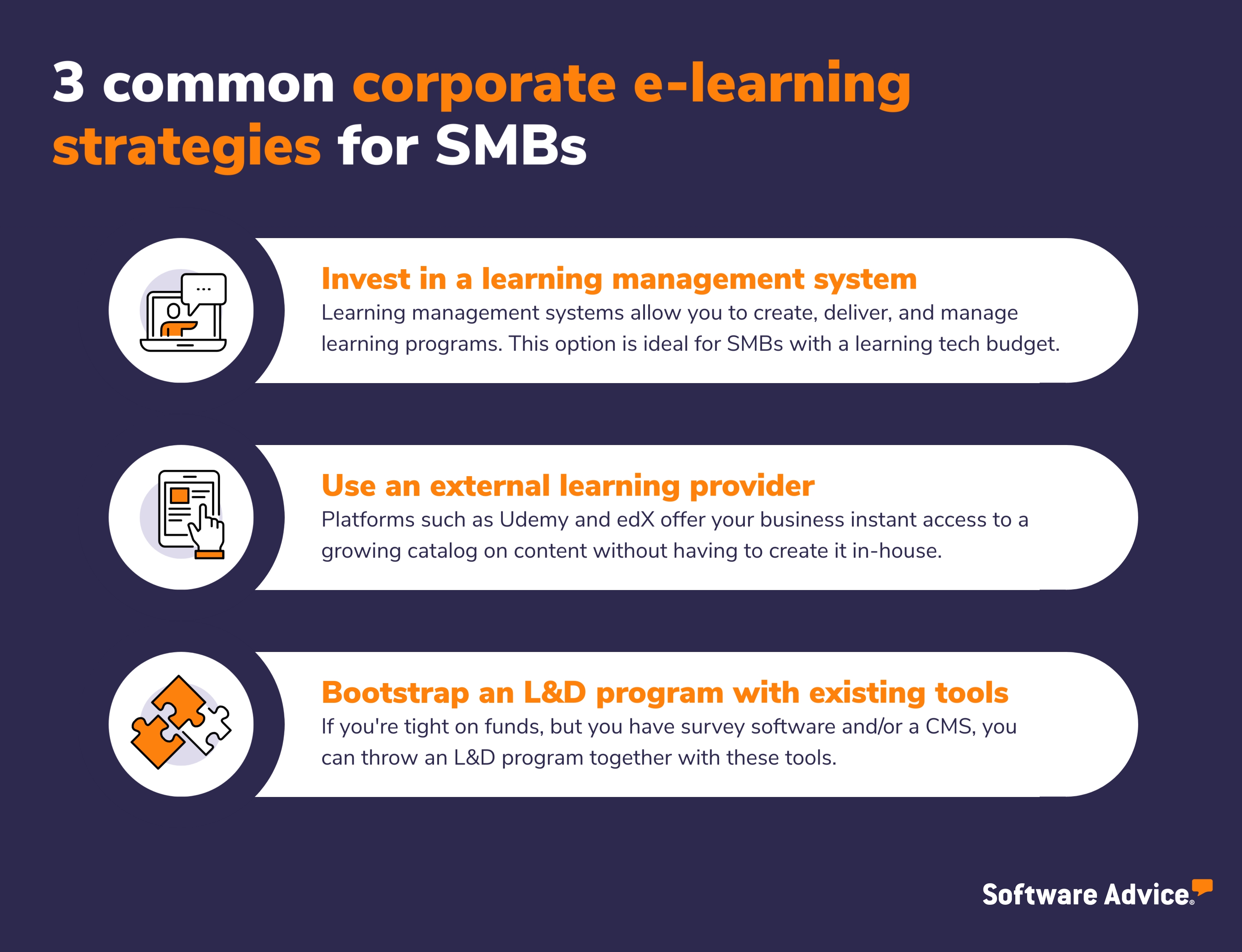
1. Use a learning management system to create, deliver, and manage L&D opportunities
Learning management systems (LMS) are software tools designed to support the administration and management of L&D programs. These platforms are built with course authoring capabilities that organizations can use to create their own employee training content, and some even come with libraries of pre-made courses that employees can access at any time.

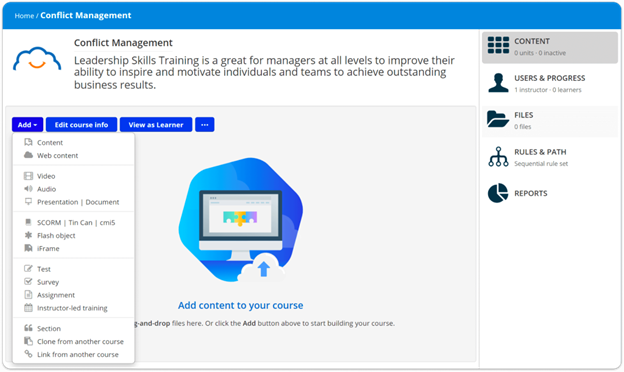
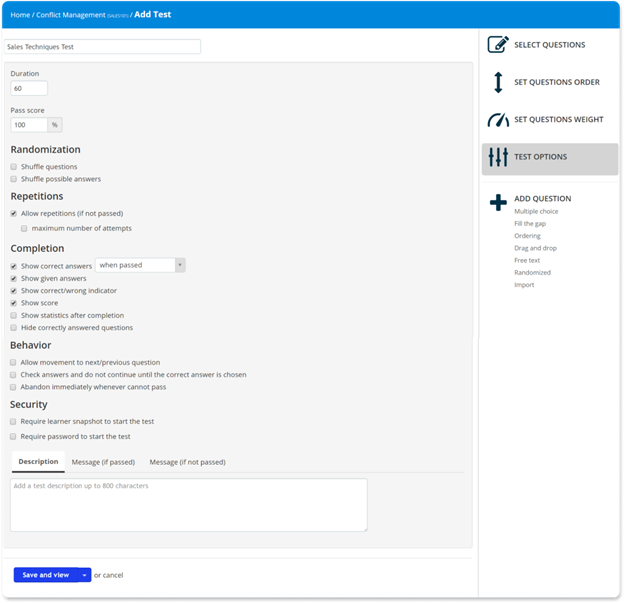
Investing in an LMS is becoming an increasingly common practice for businesses. For instance, 86% of HR leaders we surveyed [*] said that they spent more on learning and technology training in 2022.
Getting an L&D program off the ground with an LMS requires extensive planning. For starters, you have to assign a group of HR or L&D professionals the responsibility of creating e-learning content for the organization. Then, you need a system for fielding and prioritizing requests for training material from other teams. You’ll also need a standardized approach for measuring employees’ engagement with e-learning courses and a process for proving that your LMS is helping achieve business goals, such as upskilling or improving the employee experience.
Check out this short video that shares three tips for using your LMS to deliver effective corporate e-learning programs:
What kind of organizations are LMS right for?
Among the 850+ tools listed in our LMS software directory, there are options for enterprises, SMBs, and startups. Our point? There’s a very good chance that there’s an LMS out there that would work for your business’s size and goals.
Tip: Use the filters on the left side of our LMS software directory to find tools built for your industry, organization size, and budget.
The main thing to consider when deciding whether using an LMS is the right e-learning strategy for your business is how much time, money, and effort you’re willing to put into making it work. As mentioned earlier, getting an L&D program off the ground requires significant planning (and it’s also an ongoing commitment), so if you’re looking for a low-effort option, another strategy may be better for your business.
Read more about what it takes to successfully use an LMS: Perfect Your LMS Strategy: 3 HR Pros Show You How
How much does an LMS typically cost?
The cost of an LMS depends on a few things, including how many users will interact with the system, and whether you opt for a perpetual license, a month-to-month subscription, or an open source platform.
For small businesses (99 employees or less), the average cost of an LMS subscription is between $3 and $1,249 per month. The range for midsize businesses (100 to 999 employees) is between $159 and $8,991 per month. If you’d like more information about the pricing of these systems, download our LMS pricing guide.
Considering investing in an LMS? Here are your next steps
If your gut is telling you that adopting an LMS is the key to your organization’s corporate e-learning strategy, take these steps next.
Determine your learning tech budget. Partner with the employee who handles tech investments for your organization to determine what kind of budget is available for a new learning solution.
Demo with software vendors: Before committing to an LMS, test drive a few options. This will help you get a better understanding of these systems and the features they offer. If you need help shortlisting systems, get in touch with one of our software advisors.
Read our guide: Making an LMS Business Case? Know These 5 Answers First.
If you already have an LMS, determine the ROI of your platform: Calculating the ROI of your LMS will help you prove that it is a valuable use of resources for your business. Learn how to do this with our content, 3 Methods for Calculating Your LMS ROI.
2. Take advantage of all that an external learning provider has to offer
Learning providers (such as Udemy, Skillshare, and LinkedIn Learning) offer access to thousands of e-learning courses through subscriptions to their site. Using a learning provider for your L&D program has a lot of benefits, but the most obvious one is that you don’t need to train or hire an employee to create custom courses for your organization.
Instead, these websites partner with subject matter experts to come up with the content for a course, then have their own instructional design pros build the modules. Or, in some cases, the modules may be built by an independent creator who uses the provider to host their content.
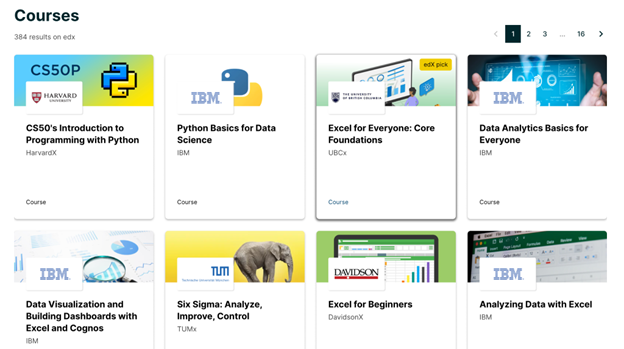
Considering that 74% of employees want self-directed and independent learning during their spare time at work, gaining instant access to a growing catalog of e-learning content can be a big win for your organization [4]. But keep in mind that these platforms have limitations that you wouldn’t incur with an LMS—for example, many learning providers don’t offer the option to create or upload your own courses, so if you wanted to host compliance training alongside learning opportunities for your employees, you’d be better off with a full-fledged LMS.
What kind of organizations are learning providers right for?
Organizations of all sizes can use a learning provider to source content for their L&D program, especially considering many vendors have flexible plan options that cater to a variety of budgets and needs (more on that below). That said, if your business lacks the bandwidth or instructional design know-how that’s needed to create online courses in-house, using a learning provider may be the best option for you.
On the flipside, considering you have less control over the subject matter of content available through learning providers, businesses that operate in niche industries may find that using an LMS to create their own courses is a better option.
How much do external learning providers typically cost?
The cost of subscribing to a learning provider varies depending on the vendor and how many learners will be using the website. While pricing information for enterprises isn’t publicly available, we’ve looked at three different providers' plan options for small teams and found that they’re all within a similar range.
For example, edX’s group plan pricing starts at $349/per learner per year and is available for organizations with 30 employees or more [5]. Udemy Business’s pricing is similar, starting at $360/per learner per year for teams with up to 20 employees [6]. LinkedIn Learning is the most expensive of these options at $379.99 per learner per year for teams of up to 20 people; however, you do get one month free with this plan [7].
Considering investing in a learning provider? Here are your next steps
Consider your compliance training strategy: How are you currently creating and administering compliance training? If you’re currently relying on an LMS to do this, and you’re considering switching to a learning provider, you will need to consider either choosing a learning provider that allows you to upload your own content, or keeping your LMS but scaling back the tier of plan you’re enrolled in.
Poll employees to learn what kinds of skills they’re interested in developing: A successful L&D program takes your employees’ career aspirations into account, so it’s a good idea to survey your workforce and get an idea of the areas they’re interested in developing.
Cross-reference employees’ learning goals with skill needs: Of course, you’ll also need to ensure your L&D program is helping your organization obtain the skills you’ll need for the future. If you need help determining what skills your business needs, download our free skills gap analysis template.
Determine if an external platform can deliver on both of the above: Ideally, the learning provider you choose will have a wealth of content that addresses both what your employees are interested in and skills that your organization needs to develop. Spend some time scrolling through different providers’ course catalogs to get a feel for which ones would be a good fit for your needs.
3. DIY an e-learning program through disparate systems
If your organization doesn’t have the budget for an LMS or a learning provider, there’s another approach you can take: Use the tools already available to you (or free versions of e-learning software) to patchwork an e-learning program together—what we’re calling “DIY-ing.”
We asked Matty Hogarth, the learning and development manager at Indeed Flex, what he’s seen organizations use in place of an LMS or learning provider, and here’s what he had to say [8]:
“I've seen form technology used for compliance training; so something like Jotform or Microsoft Forms where you deliver written information in the introduction, the question set acts as an assessment, and then you can export completion data.”
Most organizations have a go-to survey tool they can use for everything from planning happy hours to requisitioning feedback from employees, so why not put that software to use for learning purposes as well? To Hogarth’s point, you can provide written information before “testing” your employees’ knowledge, but you can also opt to share an instructional video or offer live training ahead of sending out the form.
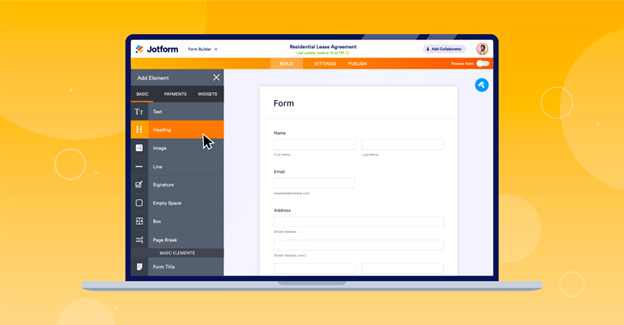
Form options available in Jotform (Source)
Content management systems (CMS) can also be helpful when DIY-ing an e-learning program. Most businesses today have a CMS that they use to author, organize, and store digital content for their website, but you can also use these tools to host learning content (such as slide decks and PDFs) where your employees know how to access it.
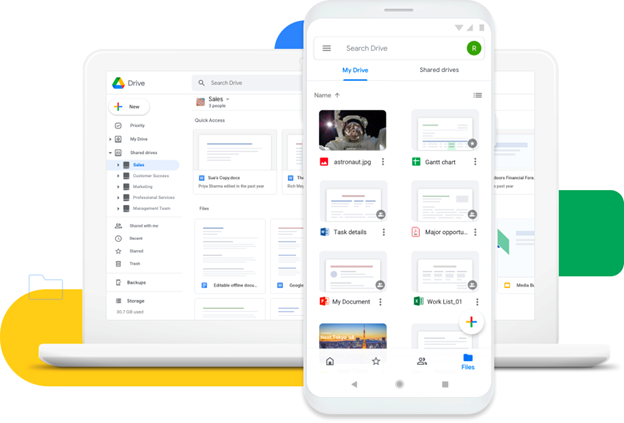
Organize and access content from multiple devices with Google Drive (Source)
Lastly, you can try using free LMS or e-learning tools to supplement your DIY-ed e-learning program. While these platforms typically have limited functionality and can only support so many users, it can be a great way to give a learning solution a trial run and provide a more engaging experience for your employees.
Related reading: Top 5 Free and Open Source LMS Tools
What kind of organizations is DIY-ing an L&D program right for?
Because this is a stop-gap strategy, it’s best for startups and small businesses (typically defined as 99 employees or less).
How much does DIY-ing an L&D program typically cost?
If your organization already has access to a survey tool and/or a content management system, the only additional costs you might incur would be for additional storage or survey allotments.
If your business doesn’t already have access to a CMS or survey tool, the good news is that many software vendors offer free versions of both of these types of tools. For example, SmartSurvey (a platform featured in our Form Automation 2022 FrontRunners) has a free plan, and the next tier up starts at $34.97 per month [9].
Considering DIY-ing your e-learning program? Here are your next steps
Evaluate your organization’s current software investments: What tools do you currently have access to that can be utilized for e-learning? We’ve given the examples of content management systems and software tools, but you could also use employee training software or your company’s intranet to support an e-learning program.
Get managers involved in the process of creating and collecting training materials: If you have a CMS or intranet, we recommend creating a set of folders to house different teams’ training resources. Encourage team leads and managers to put together content that’s relevant to the development goals of their direct reports.
Ask employees how much they value learning and development opportunities: Remember earlier when we said that survey tools are often used to requisition feedback from employees?We suggest polling your workforce and asking them to rank different aspects of the employee experience (including L&D opportunities) based on how important they are. If the results show that L&D opportunities are a priority for your workers, we recommend investing in an LMS or e-learning platform so that your L&D program can grow and thrive.
In the end, the e-learning strategy you pick should be the one that works for your bottom line
To recap, the three corporate e-learning strategies for SMBs we covered in this article are:
Using an LMS to create, deliver, and manage L&D opportunities.
Taking advantage of all that an external learning provider has to offer
DIY-ing an e-learning program through available tools.
Use the information we provided about each of these strategies to determine which one is a best fit for your organization, then take the next steps we’ve outlined in each section to get the ball rolling. Before you go, though, we have some final resources that can help you find success with your e-learning strategy:
4 Challenges of E-Learning for Businesses (And How To Overcome Them)
5 Best E-learning Content Authoring Tools for Corporate Trainers
Survey methodology
[*] Software Advice’s 2022 Toxic Culture Survey was conducted in January 2022 among 294 HR leaders at U.S. companies. An HR leader is defined as any HR employee with the role of HR manager or higher at their organization. The goal of this survey was to learn how the transition to hybrid and remote work impacted toxic employee behaviors.
Note: The applications mentioned in this article are examples to show a feature in context and are not intended as endorsements or recommendations.
Sources
Market Guide for Corporate Learning, Gartner
Learn Data Analysis with Online Courses, Classes, & Lessons, edX
Plans, Udemy Business
LinkedIn Learning Pricing, LinkedIn
Matty Hogarth, LinkedIn
Pricing, SmartSurvey